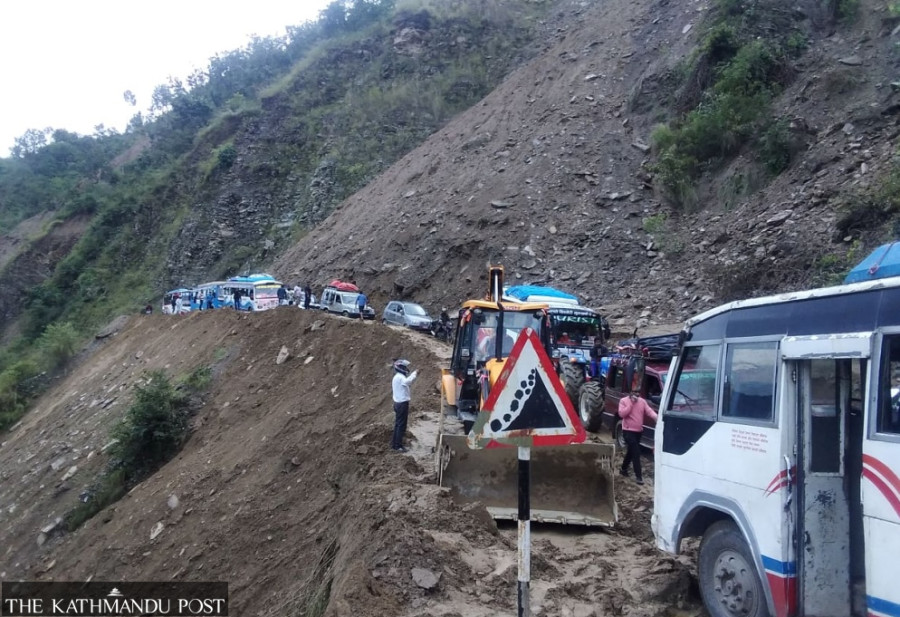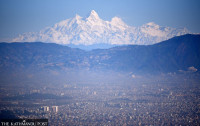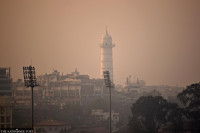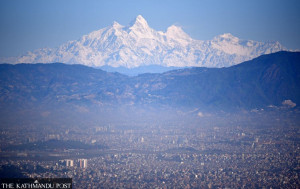Climate & Environment
Above-average rainfall recorded in first four weeks of monsoon
At least 112 people died in incidents of landslide, flood and lightning, and 58 others have been missing since the start of the monsoon this year.
Post Report
Nepal has recorded above-average rainfall in the first month of monsoon in the country. According to the Department of Hydrology and Meteorology, which provided data from 20 major rainfall measuring stations, 539 millimetres of rainfall was recorded between June 10 and July 9.
Officials said that 363 millimetres of rainfall is considered normal in the first month of monsoon. Besides, an additional 90 to 110 mm rainfall is also considered normal.
In a month’s time from June 13, 148.5 mm rainfall above-normal was recorded, said Bibhuti Pokharel, information officer at the department. The rainfall data could vary, as this is only from 20 major weather stations.
The department averaged data from around 400 rainfall measuring stations across the country.
The monsoon season in Nepal generally begins on June 13 and ends on September 23. This year, the monsoon entered Nepal from the southwest on June 10, three days ahead of the usual onset date. Last year, it started on June 14, a day later than normal.
The monsoon, which delivers around 80 percent of the country’s total annual rainfall, generally lasts for 105 days. But, in recent years, it has been taking more time to withdraw.
This year, the division has forecast above-normal rains and above-average maximum and minimum temperatures this monsoon, which could unleash extreme weather events such as flooding, inundation, and landslides.
Several districts have already reported incidents of landslides, flooding and lightning since the start of the monsoon season.
According to the National Disaster Risk Reduction and Management Authority, at least 112 people have died, and 58 others have been missing in the landslides, flood and lightning-related incidents since June 10.
Officials at the authority said that 66 people—33 males and 33 females—have been killed in landslides, 23 in floodings—9 males and 14 females—and 23 more in lightning strikes. Altogether 116 people have been injured—64 in landslides, 39 in lightning, and 13 in incidents of flood. Over 1,500 families have been affected by these incidents.
Meanwhile, the Meteorological Forecasting Division said there were chances of heavy rainfall in a few places of Bagmati, Gandaki, Koshi and Karnali provinces on Tuesday night. Some places in the rest of the provinces could witness light to moderate rainfall.
Nepal is one of the world’s most vulnerable countries to the climate crisis and has witnessed multiple extreme weather events over the past decade and a half.
Evidence suggests that maximum temperatures in Nepal are rising faster, at 0.056 degrees Celsius a year, compared to the global average rise of 0.03 degrees.
Experts say extreme weather events—excessive rainfall in a short period, continuous rains for several days after the monsoon, dry spells, droughts, below-average precipitation, and above-normal winter temperatures—have become more frequent in Nepal.
The National Disaster Risk Reduction and Management Authority estimates that 1.81 million people and 412,000 households will be affected by monsoon this year. Of them, 83,000 households will be directly impacted, and 18,000 families will require rescue due to monsoon-related disasters.




 11.12°C Kathmandu
11.12°C Kathmandu










